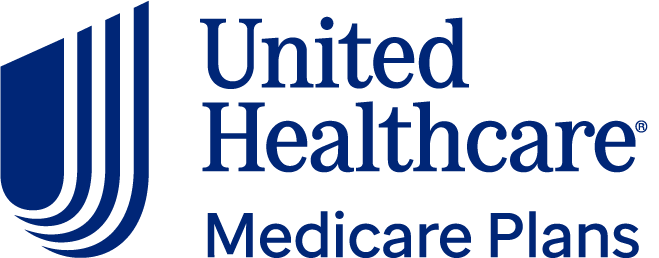The bottom line: Kaiser Permanente’s star ratings are above average, and its average maximum out-of-pocket is lower than all major providers. If you live in one of the eight states or Washington D.C., where plans are offered and don't mind a Medicare Advantage HMO plan, Kaiser is a strong contender. Jump to: Full Review

Kaiser Permanente Medicare Advantage pros and cons
Pros
- Californians are happy: Kaiser got the highest score in terms of customer satisfaction in California, one of the major Medicare markets measured by J.D. Power in this year's study.
- Ratings are strong: Kaiser’s star ratings from the Centers for Medicare & Medicaid Services are well above average.
- Prescription benefits: Most of Kaiser’s Medicare Advantage plans include drug coverage.
Cons
- Limited availability: Kaiser Permanente plans are available in just eight states and Washington, D.C.
- Limited plan types: Kaiser offers mostly HMO plans, so most members must work within Kaiser’s network of medical providers.
- Low member experience ratings: Kaiser’s member experience ratings, including customer service and getting needed care, are lower than most major providers.
Compare against other providers

🔍 UnitedHealthcare Medicare Advantage



» More options in our roundup of the best Medicare Advantage plans
Compare against other providers

🔍 UnitedHealthcare Medicare Advantage

» More options in our roundup of the best Medicare Advantage plans
Our full review
Why trust NerdWallet
45+ Medicare companies and brands analyzed by our team of experts.
30+ years of combined experience covering Medicare and personal finance.
Governed by NerdWallet's strict guidelines for editorial integrity.
NerdWallet’s Medicare content, including articles, reviews and recommendations, is produced by a team of writers and editors who specialize in Medicare. Their work has appeared in The Associated Press, Washington Post, Nasdaq, MSN, MarketWatch, Yahoo! Finance and other national and regional media outlets. They have been cited in publications including Healthline, and appeared on NerdWallet's "Smart Money" podcast.
Kaiser Permanente Medicare star ratings
Average star rating, weighted by enrollment: 4.41
Kaiser Permanente Medicare Advantage plans are rated well above the industry average, receiving an average rating of 4.41 stars out of 5 from the Centers for Medicare & Medicaid Services (CMS) for 2025, weighted by enrollment. For comparison, the average weighted star rating for plans from all providers is 3.96.
CMS maintains its own database of star ratings, which rank each plan from best (5 stars) to worst (1 star). The agency bases these ratings on plans’ quality of care and measurements of customer satisfaction, and ratings may change from year to year.
You can find a plan’s rating with the Medicare plan finding tool.
What does Kaiser Permanente Medicare Advantage cost?
Just under half (47%) of Kaiser Permanente’s Medicare Advantage plans are $0-premium plans in 2025. For Medicare Advantage prescription drug plans with a premium, Kaiser’s average monthly premium is $82.85, which is higher than most competitors.
Even as a Medicare Advantage user, you’ll still be responsible for paying your Medicare Part B premium, which is $185 per month in 2025. However, some plans cover part or all of this cost.
Requirements for copays, coinsurance and deductibles vary depending on your plan, location and the services you use. Other out-of-pocket costs to consider include:
Whether the plan covers any part of your monthly Medicare Part B premium.
The plan’s yearly deductibles and any other deductibles, such as a drug deductible.
Copayments and/or coinsurance for each visit or service. For instance, there may be a $10 copay for seeing your primary doctor and a $45 copay for seeing a specialist.
The plan’s in-network and out-of-network out-of-pocket maximums.
Whether your medical providers are in-network or out-of-network, or how often you may go out of network for care.
Whether you require extra benefits, and if the plan charges for them.
Here are examples of Kaiser Permanente Medicare Advantage costs for the most popular plans in a mid-range city:
Kaiser Permanente Medicare Advantage plan | Pricing |
|---|---|
Kaiser Permanente Medicare Advantage Centennial (HMO) | Monthly premium: $0. Deductible: None. Out-of-pocket max: $4,950. Copays:
Dental allowance: Preventive services only. |
Kaiser Permanente Medicare Advantage Basic (HMO) | Monthly premium: $99. Deductible: None. Out-of-pocket max: $4,200. Copays:
Dental allowance: Preventive services only. |
Kaiser Permanente Medicare Advantage Columbia (HMO) | Monthly premium: $63. Deductible: None. Out-of-pocket max: $3,950. Copays:
Dental allowance: Preventive services only. |
Selected plans are available in ZIP code 99201. *Inpatient hospital copay is per day for days 1-4. **Inpatient hospital copay is per day for days 1-3. | |
To get a sense of costs, use Medicare’s website to compare information among available plans in your area. You can select by insurance carrier to see only Kaiser Permanente plans or compare across carriers.
Kaiser Permanente Medicare Advantage plan types
Kaiser Permanente offers mostly HMO Medicare Advantage plans, but also offers some PPO plans.
Plan availability may vary by county. Plan offerings may include the following types:
- HMO plans
A health maintenance organization (HMO) generally requires that you use a specific network of doctors and hospitals. You may need a referral from your primary doctor in order to see a specialist, and out-of-network benefits are usually very limited.
- HMO-POS plans
HMO point-of-service plans are HMO plans that allow members to get some out-of-network services, but you’ll pay more for those services.
- PPO plans
Preferred provider organization (PPO) plans provide the most freedom, allowing you to see any provider that accepts the insurance. You may not need to choose a primary doctor, and you don’t need referrals to see specialists. You can seek out-of-network care, although it may cost more than seeing an in-network doctor.
- SNPs
Special needs plans (SNPs) restrict membership to people with certain diseases or characteristics. Hence, the benefits, network and drug formularies are tailored to the needs of those members. Kaiser Permanente offers one type of SNP:
Dual-Eligible SNP: For people who are entitled to Medicare and who also qualify for assistance from a state Medicaid program.
Third-party ratings of Kaiser Permanente
Fitch Ratings Insurer Financial Strength: AA- (stable)
Fitch Ratings is a credit rating agency that assigns ratings based on its opinion of a company’s ability to meet financial commitments. In May 2024, Fitch Ratings affirmed an Insurer Financial Strength rating of AA- (stable) for Kaiser Foundation Health Plan and its insurance company subsidiaries (KFHP collectively). Among other factors, Fitch Ratings called out KFHP’s favorable competitive positioning, unique operating model, and strong financial performance and earnings.
J.D. Power Ranking
In its 2024 Medicare Advantage Study — the 10th it's done so far — J.D. Power measured member satisfaction with Medicare Advantage plans based on eight factors ranging from level of trust to how well a provider resolves problems or complaints. The study was fielded in the 10 biggest state Medicare markets. On these measures, Kaiser Permanente placed first of all providers in California (the only state in which Kaiser had enough market share to be considered).
NCQA Score Range: 4.5 to 5.0 out of 5
The National Committee for Quality Assurance rates health insurance plans on a 5-point scale (with 5 being best) based on quality of care, patient satisfaction and health plans’ efforts to keep improving.
In its September 2024 ratings of Kaiser Permanente plans, the NCQA awarded ratings of 4.5 stars to 5.0 stars to all Kaiser plans listed. Only one plan scored 5 stars: Kaiser Foundation Health Plan of Colorado.
Kaiser Permanente Medicare Advantage service area
Kaiser Permanente offers Medicare Advantage plans in eight states and Washington, D.C. (Kaiser sells plans in California, Colorado, Georgia, Hawaii, Maryland, Oregon, Virginia and Washington state.)
More than 1.9 million Medicare beneficiaries are enrolled in Kaiser Permanente Medicare Advantage plans.
About Kaiser Permanente
Kaiser Permanente, headquartered in Oakland, California, was founded in 1945 and serves 12.5 million people across eight states and Washington, D.C. The company is made up of Kaiser Foundation Health Plan, Kaiser Foundation Hospitals and its subsidiaries, and the Permanente Medical Groups.
Kaiser Permanente offers insurance for individuals and families, employer group plans, Medicaid/Medi-Cal and Medicare Advantage.
Kaiser Permanente customer service
Kaiser Permanente Medicare Advantage members can contact their plan’s customer service in a few ways:
Call a customer service representative, available daily from 8 a.m. to 8 p.m. The phone number varies by location. Find yours by clicking on “Support Center” under “Member Support” at the bottom of your plan’s website.
Chat with a member services representative after signing into your account.
Compare Medicare Advantage providers
Get more information below about some of the major Medicare Advantage providers. These insurers offer plans in most states. The plans you can choose from will depend on your ZIP code and county.
Find the right Medicare Advantage plan
It’s important to do your research before selecting a Medicare Advantage plan for yourself. Here are some questions to consider asking:
What are the plan’s costs? Do you understand what the plan’s premium, deductibles, copays and/or coinsurance will be? Can you afford them?
Is your doctor in-network? If you have a preferred medical provider or providers, make sure they participate in the plan’s network.
Are your prescriptions covered? If you’re on medication, it’s crucial to understand how the plan covers it. What tier are your prescription drugs on, and are there any coverage rules that apply to them?
Is there dental coverage? Does the plan offer routine coverage for vision, dental and hearing needs?
Are there extras? Does the plan offer any extra benefits, such as fitness memberships, transportation benefits or meal delivery?
If you have additional questions about Medicare, visit Medicare.gov or call 800-MEDICARE (800-633-4227, TTY 877-486-2048).

- Earns top customer satisfaction scores in California, one of the major Medicare markets studied by J.D. Power.
- 100% of members are in a highly-rated plan.
- Most plans include drug coverage.
- Available in only eight states and Washington, D.C.
- Offers mostly HMO plans, so most members must work within Kaiser’s network of medical providers.
- Member experience ratings overall are below average.
Article sources
NerdWallet writers are subject matter authorities who use primary, trustworthy sources to inform their work, including peer-reviewed studies, government websites, academic research and interviews with industry experts. All content is fact-checked for accuracy, timeliness and relevance. You can learn more about NerdWallet's high standards for journalism by reading our editorial guidelines.
- 1.Centers for Medicare & Medicaid Services. CY2025 Landscape (202412) (ZIP). Accessed Apr 17, 2025.
- 2.Centers for Medicare & Medicaid Services. Understanding Medicare Advantage Plans. Accessed Apr 17, 2025.
- 3.Fitch Ratings. Fitch Affirms Kaiser Foundation Health Plan's IFS at 'AA-'; Outlook Stable. Accessed Apr 17, 2025.
- 4.J.D. Power. Regional Medicare Advantage Plans Have Higher Customer Satisfaction than Commercial Member Health Plans, J.D. Power Finds. Accessed Apr 17, 2025.
- 5.NCQA. Health Plans. Accessed Apr 17, 2025.
Medicare Advantage review methodology
The Medicare Advantage marketplace is concentrated among just a handful of companies; in many places, one insurer serves more than half of the market. NerdWallet reviewed 26 Medicare Advantage brands, with some insurers having more than one brand under their umbrella. (For example, Blue Cross Blue Shield includes the brands Anthem and Highmark.) At the national level, these reviews include nine of the 10 largest brands by enrollment. At the state level, our research includes at least one major insurer in 47 of the 49 states that offer Medicare Advantage plans, and includes the top two insurers in 35 of those states. (Alaska doesn't offer Medicare Advantage plans.) We also look at online search volume to identify regional and other notable players in the space.
NerdWallet’s Medicare Advantage reviews are based on ratings data from the Centers for Medicare & Medicaid Services, as well as pricing, plan availability by state, plan types available, consumer experience, extra benefits offered and more. These reviews are a guide, but we encourage you to shop around and compare several plans to find the best coverage and rate for you. NerdWallet does not receive compensation for any reviews. Read our editorial guidelines for additional information.
Compare Medicare Advantage plans
Insurance company | CMS star rating | States available | Members in high-rated plans | Member experience | Learn more |
|---|---|---|---|---|---|
(855) 821-0556 / TTY 711 Call UnitedHealthcarefrom UnitedHealthcare | |||||
3.95 | 3.95/5 | 49 states and Washington, D.C. | Medium (50% to 84%) | 3.41 (Average) | |
(855) 432-0512 / TTY 711 M-F 9AM-9PM, Sat 10AM-6PM ETSpeak to a licensed insurance agent on askchapter.orgon NerdWallet | |||||
 (855) 432-0512 / TTY 711 M-F 9AM-9PM, Sat 10AM-6PM ETSpeak to a licensed insurance agent on askchapter.orgon NerdWallet | 3.63 | 3.63/5 | 48 states, Washington, D.C., and Puerto Rico | Low (49% or less) | 3.62 (Above average) |
(855) 432-0512 / TTY 711 M-F 9AM-9PM, Sat 10AM-6PM ETSpeak to a licensed insurance agent on askchapter.orgon NerdWallet | |||||
 (855) 432-0512 / TTY 711 M-F 9AM-9PM, Sat 10AM-6PM ETSpeak to a licensed insurance agent on askchapter.orgon NerdWallet | 4.29 | 4.29/5 | 44 states and Washington, D.C. | High (85% to 100%) | 4.01 (Above average) |
(855) 432-0512 / TTY 711 M-F 9AM-9PM, Sat 10AM-6PM ETSpeak to a licensed insurance agent on askchapter.orgon NerdWallet | |||||
 (855) 432-0512 / TTY 711 M-F 9AM-9PM, Sat 10AM-6PM ETSpeak to a licensed insurance agent on askchapter.orgon NerdWallet | 3.97 | 3.97/5 | 29 states and Washington, D.C. | Medium (50% to 84%) | 3.82 (Above average) |
